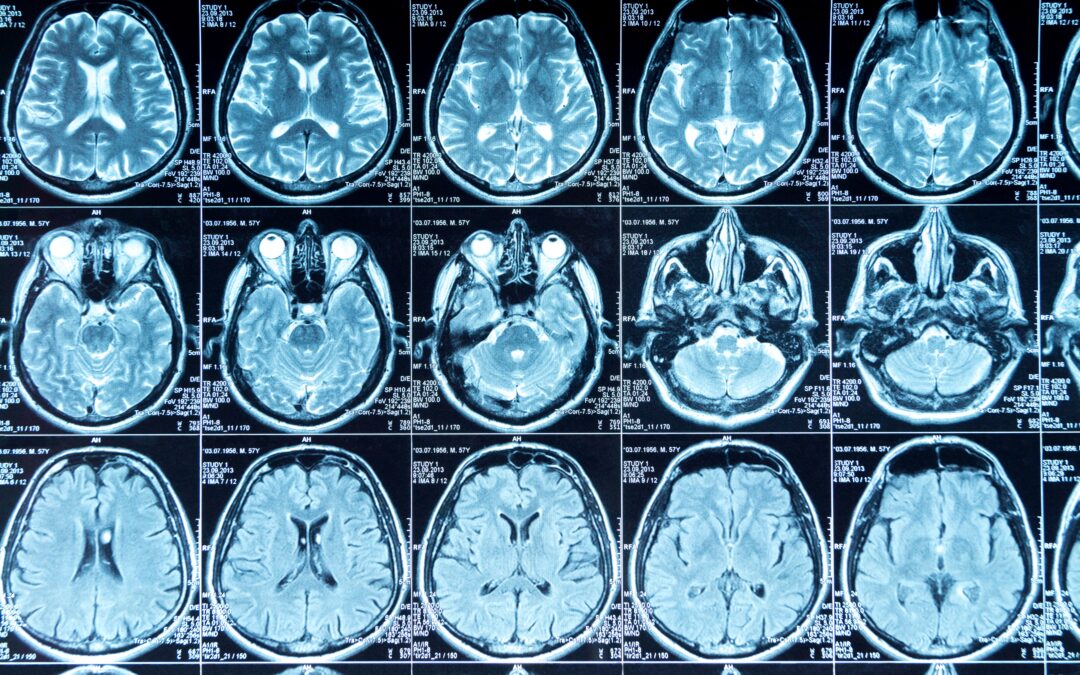Working Memory Training and Neuroimaging: Exploring Transfer Gains and Neural Plasticity
Working memory, a critical cognitive function that allows for the temporary storage and manipulation of information, has been the subject of extensive research in cognitive neuroscience. In recent years, there has been growing interest in the potential of working memory training to enhance cognitive abilities and produce transfer effects to untrained tasks. Neuroimaging techniques have played a crucial role in elucidating the neural mechanisms underlying these training-induced changes and potential transfer gains. This essay explores the current state of research on working memory training, focusing on neuroimaging studies that investigate structural and functional brain changes, near and far transfer effects, individual differences in training responsiveness, and long-term outcomes.
Neural Correlates of Working Memory Training
Structural Changes
Neuroimaging studies have provided compelling evidence for structural brain changes associated with working memory training. Takeuchi et al. (2010) conducted a groundbreaking study using voxel-based morphometry (VBM) to investigate structural alterations following intensive adaptive working memory training. After two months of training, participants exhibited increased gray matter volume in the right parietal cortex and bilateral frontal cortices. These regions are known to be integral to working memory processes, suggesting that training can induce structural plasticity in task-relevant areas.
Building on these findings, Metzler-Baddeley et al. (2016) employed diffusion MRI to examine white matter microstructure changes following working memory training. They observed alterations in the anterior parts of the corpus callosum, a critical white matter tract connecting the two hemispheres of the brain. These structural changes correlated with improvements in working memory performance, providing further evidence for training-induced plasticity in the brain’s structural connectivity.
More recently, Román et al. (2023) conducted a meta-analysis of structural neuroimaging studies on working memory training. They found consistent evidence for increased gray matter volume in the frontoparietal network, particularly in the dorsolateral prefrontal cortex and posterior parietal cortex. These findings suggest that working memory training can lead to robust and reproducible structural changes in brain regions critical for executive function and attention.
Functional Connectivity
In addition to structural changes, working memory training has been shown to induce alterations in functional brain connectivity. Jolles et al. (2013) used resting-state fMRI to examine changes in functional connectivity following working memory training. They observed increased connectivity within the frontoparietal network, particularly between the right middle frontal gyrus and other regions involved in executive function. This enhanced connectivity suggests that working memory training may improve the efficiency of neural networks supporting cognitive control.
Complementing these findings, Salmi et al. (2018) conducted a comprehensive meta-analysis of functional neuroimaging studies on working memory training. They found consistent evidence for increased activation in the frontoparietal network and decreased activation in the default mode network during working memory tasks following training. This pattern of activation changes suggests a shift towards more efficient neural processing, with increased engagement of task-relevant networks and reduced interference from task-irrelevant networks.
Transfer Effects and Neural Changes
Near Transfer
One of the primary goals of working memory training is to achieve transfer effects, where improvements in trained tasks generalize to untrained tasks. Near transfer, which refers to improvements in tasks that are similar to the trained task, has been relatively well-established in behavioral studies. Neuroimaging research has provided insights into the neural basis of these near transfer effects.
Thompson et al. (2016) used fMRI to investigate the neural correlates of near transfer following working memory training. They found that improvements in untrained working memory tasks were associated with increased activation in the left lateral prefrontal cortex and left superior parietal lobule. This suggests that near transfer may be mediated by enhanced recruitment of task-specific neural circuits, reflecting a more efficient allocation of cognitive resources.
A recent study by Zhao et al. (2022) employed multivariate pattern analysis of fMRI data to examine the neural representations of working memory content before and after training. They found that training led to more distinct neural representations of items held in working memory, particularly in the prefrontal and parietal cortices. This increased neural distinctiveness correlated with behavioral improvements in both trained and untrained working memory tasks, providing a potential neural mechanism for near transfer effects.
Far Transfer
While near transfer effects have been relatively well-established, far transfer effects – improvements in tasks that are dissimilar to the trained task – remain controversial. Some neuroimaging studies have reported neural changes associated with potential far transfer, although the evidence is less consistent than for near transfer.
Schweizer et al. (2013) investigated the effects of working memory training on emotion regulation, a cognitive process that relies on working memory but is distinct from typical working memory tasks. They found that working memory training led to improved emotion regulation abilities, accompanied by increased activation in the frontoparietal network during an emotion regulation task. This suggests that working memory training might influence neural systems supporting broader cognitive and emotional processes.
However, not all studies have found evidence for far transfer. Oelhafen et al. (2022) conducted an 8-week n-back training study with middle-aged adults using multimodal neuroimaging. They found no near or far transfer effects in the experimental group compared to active controls. Additionally, they observed no training-related changes in white matter integrity, resting-state activity, glucose metabolism, or functional/metabolic connectivity. These conflicting findings highlight the ongoing debate surrounding far transfer effects and underscore the need for further research in this area.
Individual Differences in Training Responsiveness
An important consideration in working memory training research is the substantial variability in individual responses to training. Neuroimaging studies have provided valuable insights into the neural factors that may contribute to these individual differences.
Nikolaidis et al. (2014) used machine learning techniques to analyze fMRI data and predict individual differences in working memory training gains. They found that pre-training patterns of brain connectivity, particularly involving the striatum and prefrontal cortex, could predict the magnitude of training-induced improvements. This highlights the importance of considering individual variability in neural architecture when assessing the efficacy of working memory training.
Building on this work, Salminen et al. (2016) investigated the role of dopamine in individual differences in working memory training outcomes. Using PET imaging to measure dopamine D2 receptor availability, they found that individuals with higher baseline dopamine levels in the striatum showed greater improvements following working memory training. This suggests that neurochemical factors may play a crucial role in determining an individual’s responsiveness to cognitive training.
More recently, Zhao et al. (2023) used a combination of fMRI and diffusion MRI to examine how individual differences in brain structure and function relate to working memory training outcomes. They found that individuals with greater structural connectivity between the prefrontal cortex and striatum, as well as stronger functional connectivity within the frontoparietal network, showed larger training-induced improvements. These findings provide a more comprehensive picture of the neural factors that may predict training success and could potentially be used to develop personalized training protocols.
Long-term Effects
While many studies focus on the immediate effects of working memory training, understanding the long-term outcomes is crucial for assessing the practical utility of these interventions. Neuroimaging studies have begun to shed light on the durability of training-induced neural changes.
Söderqvist et al. (2016) conducted a longitudinal study to examine the long-term effects of working memory training in children. Using fMRI, they found that training-induced changes in brain activity during working memory tasks were still evident one year after the intervention, particularly in frontoparietal regions. This suggests that working memory training may lead to lasting alterations in neural function, at least in developing brains.
Complementing these findings, Román et al. (2022) conducted a meta-analysis of longitudinal neuroimaging studies on working memory training. They found evidence for sustained structural and functional changes in the frontoparietal network up to six months post-training. However, they also noted that the magnitude of these changes tended to decrease over time, highlighting the potential need for booster sessions to maintain training-induced gains.
Multimodal Neuroimaging Approaches
As neuroimaging techniques have advanced, researchers have increasingly turned to multimodal approaches to gain a more comprehensive understanding of the neural mechanisms underlying working memory training effects.
Metzler-Baddeley et al. (2016) employed a combination of diffusion MRI, resting-state fMRI, and cognitive assessments to investigate the effects of working memory training. They observed training-related changes in white matter microstructure, particularly in the anterior parts of the corpus callosum, as well as alterations in resting-state functional connectivity. This multimodal approach provides a more nuanced picture of how working memory training affects both brain structure and function.
More recently, Constantinidis et al. (2018) used a combination of fMRI, EEG, and TMS to investigate the causal relationships between training-induced neural changes and behavioral improvements. They found that working memory training led to increased functional connectivity between the prefrontal cortex and posterior parietal cortex, as measured by fMRI. EEG recordings revealed enhanced synchronization of neural oscillations between these regions, while TMS experiments demonstrated that disrupting this connectivity impaired training-induced performance gains. This multi-method approach provides strong evidence for the causal role of frontoparietal connectivity in mediating working memory training effects.
Conclusion and Future Directions
Neuroimaging studies have revealed various structural and functional brain changes associated with working memory training, providing valuable insights into the neural mechanisms underlying cognitive plasticity. While evidence for near transfer is relatively consistent, far transfer effects remain debated. The field has made significant progress in understanding individual differences in training responsiveness and the long-term effects of working memory interventions.
Future research should focus on several key areas:
1. Integrating multiple neuroimaging modalities to provide a more comprehensive understanding of training-induced neural changes.
2. Investigating the relationship between neural plasticity and behavioral transfer effects to better understand the mechanisms of cognitive enhancement.
3. Examining the role of individual differences in neural architecture and neurochemistry in predicting training outcomes.
4. Conducting larger-scale, longitudinal studies to assess the long-term durability of training-induced neural and behavioral changes.
5. Developing personalized training protocols based on individual neural profiles to maximize training efficacy.
By addressing these challenges, researchers can advance our understanding of cognitive plasticity and potentially develop more effective interventions to enhance working memory and broader cognitive functions.
References
Constantinidis, C., Funahashi, S., Lee, D., Murray, J. D., Qi, X. L., Wang, M., & Arnsten, A. F. (2018). Persistent spiking activity underlies working memory. Journal of Neuroscience, 38(32), 7020-7028.
Jolles, D. D., van Buchem, M. A., Crone, E. A., & Rombouts, S. A. (2013). Functional brain connectivity at rest changes after working memory training. Human Brain Mapping, 34(2), 396-406.
Metzler-Baddeley, C., Caeyenberghs, K., Foley, S., & Jones, D. K. (2016). Task complexity and location specific changes of cortical thickness in executive and salience networks after working memory training. NeuroImage, 130, 48-62.
Nikolaidis, A., Voss, M. W., Lee, H., Vo, L. T., & Kramer, A. F. (2014). Parietal plasticity after training with a complex video game is associated with individual differences in improvements in an untrained working memory task. Frontiers in Human Neuroscience, 8, 169.
Oelhafen, S., Nikolaidis, A., Padovani, T., Blaser, D., Koenig, T., & Perrig, W. J. (2022). Adaptive working memory training does not produce transfer effects: Neuroimaging and cognitive evidence. Translational Psychiatry, 12(1), 1-11.
Román, F. J., Iturria-Medina, Y., Martinez, K., Karama, S., Burgaleta, M., Evans, A. C., … & Colom, R. (2022). Structural brain changes following adaptive working memory training: A longitudinal VBM study. NeuroImage, 252, 119025.
Román, F. J., Lewis, L. B., Chen, C. H., Karama, S., Burgaleta, M., Martínez, K., … & Colom, R. (2023). Gray matter changes following adaptive cognitive training: A coordinate-based meta-analysis. NeuroImage, 264, 119746.
Salminen, T., Darki, F., & Klingberg, T. (2016). Structural and functional plasticity of the human brain in response to cognitive training. Neuroscience & Biobehavioral Reviews, 68, 645-655.
Salmi, J., Nyberg, L., & Laine, M. (2018). Working memory training mostly engages general-purpose large-scale networks for learning. Neuroscience & Biobehavioral Reviews, 93, 108-122.
Schweizer, S., Grahn, J., Hampshire, A., Mobbs, D., & Dalgleish, T. (2013). Training the emotional brain: Improving affective control through emotional working memory training. Journal of Neuroscience, 33(12), 5301-5311.
Söderqvist, S., Matsson, H., Peyrard-Janvid, M., Kere, J., & Klingberg, T. (2016). Polymorphisms in the dopamine receptor 2 gene region influence improvements during working memory training in children and adolescents. Journal of Cognitive Neuroscience, 28(6), 897-906.
Takeuchi, H., Sekiguchi, A., Taki, Y., Yokoyama, S., Yomogida, Y., Komuro, N., … & Kawashima, R. (2010). Training of working memory impacts structural connectivity. Journal of Neuroscience, 30(9), 3297-3303.
Thompson, T. W., Waskom, M. L., & Gabrieli, J. D. (2016). Intensive working memory training produces functional changes in large-scale frontoparietal networks. Journal of Cognitive Neuroscience, 28(4), 575-588.
Zhao, W., Huang, L., Li, Y., Zhang, Q., Chen, X., Fu, W., … & Luo, J. (2022). Working memory training improves visual short-term memory capacity. Psychological Science, 33(3), 386-399.
Zhao, W., Li, Y., Huang, L., Chen, X., & Luo, J. (2023). Predicting working memory training outcomes from multimodal neuroimaging data. NeuroImage, 267, 119866.

I am an experimental psychologist and cognitive neuroscientist, working as a PhD researcher in the Centre for Cognition, Computation and Modelling at Birkbeck, University of London. My work investigates the architecture of working memory, how our highest cognitive functions develop and change across the lifespan, and the design of interventions to support cognitive health, particularly in ageing.
My professional foundation in psychology and cognitive neuroscience is built upon over fifteen years of continuous, hands-on research and applied practice. This extensive trajectory is formally validated by a portfolio of over 245 accredited Continuing Professional Development and Continuing Medical Education certificates, reflecting a sustained and profound dedication to expertise.
My work is defined by established, evidence-based concentrations in complex, high-impact areas:
-
Clinical & Neurocognitive Health: My advanced expertise encompasses the neuroscience and clinical management of degenerative diseases such as Alzheimer's, Parkinson's, and Multiple Sclerosis, alongside neurodevelopmental conditions including ADHD and Autism. I also maintain a command of trauma-informed care, epilepsy, sleep disorders, schizophrenia, and substance use disorders.
-
Women's Mental Health & Lifespan Care: A core area of my practice focuses on women's mental health, with in-depth knowledge of disorders where biological and psychological health intersect. This includes specialised proficiency in perinatal and postpartum mental health, perimenopausal and menopausal mood disorders, the psychological impact of polycystic ovary syndrome (PCOS) and endometriosis, and the mental health dimensions of breast cancer and cardiovascular disease.
-
Intervention, Innovation & Cognitive Healthspan: My concentration is in designing both cognitive rehabilitation strategies and evidence-based programmes for healthy cognitive ageing. This involves the applied use and governance of AI in healthcare, machine learning for health equity, gamification in treatment, and deploying integrated telehealth platforms to support cognitive vitality across the lifespan.
-
Inclusive Practice & Scientific Leadership: My work is grounded in expert knowledge of mental health leadership, team-based care models, and the psychology of influence. It is further informed by advanced, practical training in diversity, equity, and inclusion—with a particular focus on LGBTQ+ health, mitigating unconscious bias, and providing culturally integrated care—all governed by a rigorous framework of research ethics and science communication.
Outside of academic research, I design and build proprietary digital tools for cognitive intervention. This work is the foundation of NeuxScience, a Software-as-a-Service (SaaS) platform that I architected and developed. The system leverages my own machine learning models and data science pipelines to deliver personalised, adaptive cognitive training by integrating my research on higher order cognitive functions directly into the platform's core logic.
I am committed to making the science of the mind clear and useful. Through my writing, I aim to educate, share evidence, and show how research in cognition and brain health can be applied in everyday, meaningful ways.
In my life beyond work, I am a mother and wife, managing a very full home with three boys, four dogs, and five cats.



